|
During the wintertime, your dog’s paws can take a beating with all the snow, ice, salt on the sidewalk, and overall cold weather. It’s important to protect their paw pads as they don’t have protection like we do when we wear shoes. Fortunately, there are several ways to protect your dog’s paws this winter. Make sure to prepare for the cold weather with the following options: BootiesLove them or hate them, dog booties are a good way to keep your pup’s paws covered during the winter months. Not every breed is intended to withstand cold weather; therefore, booties are an effective way to protect your canine’s paws because they offer warmth, full coverage, and are durable. To find your dog’s right size, measure from the heel to the tip of the toenail. Paw BalmBefore walking on the snow or ice, rub some paw balm on your dog’s paws. This will minimize the dry skin and damage salt can cause. Make sure to reapply the balm after returning from walks. Having paw balm on hand is a good way to keep their paws soft and supple during the cold months. You can find it at the pet store, or you can make your own paw balm. Keep a Towel on hand when taking your dog out for a walk, make sure to wipe down their paws afterwards with a towel. This will minimize any damage salt, ice, or other residue they may have stepped on during their stroll. If you have concerns about salt, consider dipping each paw in a bucket of lukewarm water and then towel drying. Keep Walks ShortDuring the extreme cold, it’s best to keep walks short for your canine. Being out in the cold too long is dangerous and can lead to frostbite. Keep in mind that, if it’s too cold for you, chances are it’s too cold for your dog, too. If you do take your dog for a walk, you may want to consider putting them in a coat or jacket. Recipe: DIY Dog Paw Balm Supplies
0 Comments
Halloween Dog Safety and Dangerous TreatsMany of the food and treats we enjoy on Halloween are toxic to dogs, and some can be deadly. Unlike cats, who tend to be picky eaters, many dogs will eat anything – including the wrapper in which the treat is stored. The treats below are especially dangerous to your pets, so be sure to keep them out of reach.
Banana Pumpkin Dog Treats
As pet parents, it is our responsibility to provide and ensure the best of the best for our furry companions! After all they count on us to take care of them. There are so many different opportunities for us to ensure that they are happy and healthy!
By working your dogs' mind and keeping them busy it makes for a better well-rounded life for them! There are a few different ways to achieve an easy feeding enrichment program. The treat mat that you see here is not only super easy to clean but it also provides a ton of fun for your dog. Another super easy idea is making pooch friendly ice cubes! The concept is simple: stuff and empty ice cube tray with dog-friendly treats (such as cucumbers, honey, carrots, peanut butter or cooked chicken) and top it with water or broth. Pop it in the freezer and give it to your dog when it is frozen. They'll need to sniff out the treats, but the entire game will last longer because they will be locked in ice! You walk in the door and your puppy pees. A friend comes over and your puppy pees. You get out a toy and, guess what? Your puppy pees. Excitement urination is different than submissive urination as it occurs when your dog is in a very stimulated state, generally in the context or greetings or play, and your dog is not displaying any signs of fear or insecurity. Your dog loses control of their bladder in moments of social stimulation and excitement. This type of urination is common in dogs under one year of age and is a behavior that often stops as your dog matures. The good news is you don’t have to wait for your dog to grow out of it. With some training and some management, you can help make those messy moments a thing of the past. Generally speaking, you will need to keep interactions lower key. Use the following tips to set your dog up for success.
The difference between tired and over tired. Imagine your state of mind while going for a nice relaxing walk on a sunny day. You may come home refreshed and ready to start a new project. Now, think about a time when you didn’t sleep well and then had a long busy day at work. You may remember being more irritable, quick to overreact, foggy brained or maybe even hyper as you reached over tiredness. This is like how your dog acts when they have had too much emotional, mental, and physical stimulation. A tired puppy taking a nap may provide a reprieve from sharp teeth and busy antics, but an over tired dog can lead to increased vocalizations and anxious behavior such as jumping, mouthing/biting, pacing, panting and destructive chewing. While physical exercise is essential to the health and wellbeing, of our dogs, the amount of exercise needed is specific to the individual dog We need to remember exercise alone is not a solution for problem behaviors. The general recommendation is an hour of play time and exercise each day to sufficiently keep dogs in a good state of physical fitness. How we exercise our dogs is critical to their physical and emotional wellbeing as is our relationship with them. High arousal activities, while providing exercise, can release high levels of adrenaline. Adrenaline can affect behavior in both humans and dogs. Physical exercise can give off a temporary high and this can show up as overstimulation at home, during training, or even while visiting a friend’s house. You may notice your dog paces, whines, or barks incessantly, they might jump on you at random times or become mouthy, often showing dilated pupils. Sometimes they might stare at you or fixate on something like the cat or other dogs on walks. These are all signs of high arousal and highly aroused dogs are stressed dogs. Stress affects our dogs just as it affects us. High arousal activities like playing fetch over and over, rough housing, chasing the kids, and play sessions that are too long should be avoided. Never allow your dog to chase a laser pointer as this triggers prey drive that’s never fulfilled. This can create obsessive compulsive behaviors and can cause reactivity to flash of light such as the reflection of your phone. Continuous highly physical activities increase your dog’s stamina which creates a dog that requires more and more exercise to satiate them. Soon you will find yourself with a dog that requires several hours of physical activity and will run you ragged.
So, what do we do with a dog that has too much energy or displays over aroused behavior?
If your dog takes part in high arousal, highly physical activities, we recommend rest days to allow the stress levels in the dog’s body to decrease. Keep play sessions short with training or another mental stimulation activity in between. Try to end your play session while your dog is still eager to play and only start play when your dog is doing something you want, like laying calmly or chewing on an appropriate toy. Fall brings some wonderful changes; brisk evening walks with your dog, autumn decorations, curling up on the couch to watch your favorite Halloween flicks to name a few. With the changing of the seasons comes some notable adjustments for your dog too. Below are a few things to help you and your dog prepare for the upcoming autumn season.
Keep an Eye Out for Wildlife Be extra vigilant this time of year of your dog’s off leash whereabouts. If you live in a more rural area where wildlife is prominent, it may be second nature to keep your eyes peeled for deer, moose, coyotes or even bear. Don’t forget about the smaller animals like porcupine and skunks, all very busy with their winter preparations. These animals could pose unwanted threats to your canine. Cooler Temperatures Colder temperatures and shorter days often mean less time spent outside, which could decrease the amount of exercise your dog is getting. This could be especially perilous on older dogs with arthritis. It is recommended short and consistent exercise for arthritic dogs, if possible, such as shorter walks multiple times a day rather than long winter walks. Additionally, moist heat therapy can decrease pain and promote good blood flow and healing. It is also that time of year when many of us will break out the antifreeze to keep our vehicles running smoothly. Take extreme caution in keeping your pets away from this harmful substance, as pets are attracted to the sweet smell of the chemical ethylene glycol found in antifreeze. Also, be sure to follow your veterinarian’s recommendations on tick, flea, and heartworm prevention. Rodenticides With temperatures dropping, rodents will be searching for warmer housing. If you use pesticides to keep rodents away from your home, make sure you place deterrents in pet free areas, as these chemicals are often lethal to your animals. Mouse poisons are formulated to attract rodents and can unfortunately entice your dog or cat as well. Even if you do not use these products, but your animals spend unsupervised time outside, it is helpful to be aware of the dangers these chemicals pose. Back to School With many children doing schoolwork online and at home this fall, you may be finding more school supplies on your floor than usual. Be mindful of where small items like markers, crayons and erasers are placed in your house and keep them out of reach from your dog. Don’t let your dog eat your homework! Halloween Costumes & Candy Halloween is right around the corner, and you have been dying to try out your pup’s lion mane costume to capture that perfect smile for the camera! With all the fun, spooky activities, the last scare you want is realizing your dog has eaten the fabric or buttons from their costume. Not to mention the candy corn and chocolate marshmallow Jack-O-Lanterns they may think would be a perfect dog treat. Go for the trick instead! Consult with your vet if you believe your dog has ingested harmful substances that could be toxic to their system. It is a good idea to never leave your pet alone in their festive wear, and make sure your dog can move about freely and is not restricted in any way. As we head into the holidays, remember to take care of yourself too and make it a habit to relax when you can. Your dog can sense any stress you may be feeling, so unwinding benefits you both. Rest assured, 2020 is soon coming to an end but it is not over yet! Most importantly, we hope you have a safe and fun autumn. 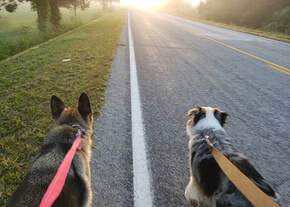 Tips for Hiking with Dogs 1. Consider Your Dog’s Physical Condition If you’re not sure how your dog will do on a hike, start with long walks in your neighborhood and slowly build up his endurance. When he’s ready, take short hikes and then gradually add distance. If your dog is older or has physical disabilities, choose trails that will accommodate a dog stroller or wheelchair. It’s a little more work, but the rewards are well worth the effort. 2. Follow the Rules Whenever you use an online resource to locate pet friendly hikes, it’s important to verify the rules before you go. Policies regarding pets change frequently, so call, confirm on the park’s website, or ask when you arrive where dogs can go and whether leashes are required. Then abide by the trail rules! Many places have stopped allowing dogs on the trails after complaints about off-leash incidents. If the regulations in one place don’t suit you, find another place to hike. 3. Prepare for Weather & Terrain Reading reviews of any trails you’re considering will help you prepare for the terrain. And checking the forecast will allow you to consider the weather. When traveling, don’t underestimate how differences in elevation, humidity, and sun strength will affect you and your dog. Spring and summer hiking means sun and bugs, so pack sunscreen and insect repellant formulated for dogs. Breeds with short coats may appreciate an outer layer if you’re hiking in wet or cold conditions, and dog boots might be necessary if you’re hiking in snow or rough terrain. 4. Carry Plenty of Water When I was running the rule was to drink before you got thirsty. The same applies to your dog. So, you’ll need to take plenty of water for you both. Be careful about allowing your dog to drink from streams or lakes. These water sources can contain gnarly parasites that will give your dog severe gastrointestinal issues or worse. Insisting he only drink water you’ve brought along could save you a trip to the vet. 5. Allow Your Dog to Share the Load Rather than carrying all the water yourself, get your dog a backpack and let him haul his own! Acclimate your dog to the pack by starting with little weight and short walks. When you start hiking, be sure to adjust the pack contents and straps as needed to keep the weight balanced. Most dogs can safely carry up to a third of their weight, so be careful not to overload them. Buster loved his backpack, and we appreciated him for packing his and Ty’s water and a light collapsible bowl. 6. Carry A First Aid Kit A human first aid kit will have most of the supplies you and your dog will likely need for any cuts, bruises, and abrasions. Consider adding compression tape or booties to wrap injured paws. And include an antihistamine after talking to your vet about the proper dosage, in case you or your dog gets bit or stung and has an allergic reaction. Be sure that you know what’s in your kit and how to use it. When someone is howling in pain is not the best time to search the kit or read the directions! 7. Check Your Dog’s ID Before you head out, make sure your dog’s ID tag is properly secured to a collar that won’t slip off. The tag should have your cell phone number and any other information that someone might need if they find your dog. If you know you’ll be leaving cell coverage behind, be prepared with a plan to find your lost dog in a cell phone dead zone. 8. Take Extra Care During Hunting Season Extra precautions are necessary when hiking during any hunting season. A bright or reflective dog vest and bear bells will help keep your pup from being mistaken as a target. You’ll also want to wear something bright that will help you stand out from the natural environment. During hunting season, it’s also a good idea to keep your dog on leash – even in areas where he’s allowed off-leash. This will help him avoid confrontations with any hunting dogs that might be in the area. 9. Leaves Of Three, Let It Be Dogs are susceptible to plant-based toxins just like people. And they can pass the oily substance from poison ivy or poison oak to you on their fur. Take a moment to be sure that you can identify the toxic plants common to the area you’ll be hiking. 10. Be Aware Of Wildlife Your dogs will hear, smell, and sense things before you. If you’re hiking with your dogs and they start barking, they could be warning you about a potential threat in the vicinity. Make yourself aware of what kinds of wildlife you could encounter on your hike, and learn how to avoid confrontations. If you’re hiking in bear country, fit your dog with bear bells and carry a can of bear spray. And anytime you’re entering an area where bear sightings are possible, always keep your dog in sight and stay alert! 11. Let Someone Know Where You’re Going Stuff happens! If for some reason you were unable to get back and needed assistance, having a relative, friend, neighbor, or park ranger know where you are and when you expected to return is a big help. Printing this information on a simple note card with relevant contact numbers is helpful. Carry a copy of the trail map or take a photo of the map at the trailhead and take the park phone number with you during your hike. If you end up lost on a trail, you’ll be glad you did! Calling the ranger for directions might save you from spending a night under the stars. An app like Runkeeper, which tracks exactly where you’ve hiked, can also be helpful. If at any point you need to backtrack, it will show where you are and the route you’ve covered. Take a mini portable battery along to recharge your phone, too! 12. No One Should Be Able To Tell You Went Hiking With Your Dogs All trash and dog waste should be bagged, carried out, and disposed of properly. Don’t leave any evidence that you and your dog were on the trail's 13. Check For Ticks After Hiking Ticks can cause severe medical problems such as Lyme disease and Rocky Mountain spotted fever – both of which can be contracted by dogs and humans. Talk to your vet about an appropriate prevention program if you’re traveling to a place where ticks are common. And be sure to examine yourself and your dog after hiking in wooded areas where ticks are found. Content barrowed from Go Pet Friendly
What is Heatstroke? When a dog’s internal body temperature goes above a normal temperature of 101.5 Fahrenheit (F), this is a fever and is called hyperthermia. When the body temperature is above 105F, the dog may be suffering from heatstroke. Dogs have only a couple of ways to cool off: blood vessel expansion and panting. When dogs pant, they evaporate moisture from their tongues, nasal passages, and the lining of their lungs, and this cools them down as air passes over the moist tissue. They also cool off via vasodilation. Blood vessels, especially in the ears and face, expand – bringing overheated blood closer to the surface to cool down. The bottom surfaces of paws can sweat, but not enough to make a difference. “Heatstroke usually occurs when high ambient temperature overcomes the dog’s ability to dissipate heat. The degree of damage is determined by how high a body temperature is reached and how long the animal is exposed,” says Dr. Jerry Klein, AKC chief veterinary officer. Signs to Watch Out ForHeatstroke in dogs is life threatening and can also result in very serious complications. There are early signs of heatstroke that you can be alert to that may help you remedy the condition before things get too serious. Early signs of heatstroke include: heavy panting and rapid breathing, excessive drooling, dry mucous membranes, bright red gums and tongue, skin hot to the touch, and a higher heart rate. Affected dogs become hyperactive and may have difficulty maintaining balance. As exposure to excessive heat goes on, the dog’s condition worsens and includes signs of shock: pale mucous membranes with white or blue gums, very rapid heart rate, and a drop in blood pressure. The dog hyperventilates, and dehydration becomes more severe. Pupils dilate, the pulse becomes more irregular, and the dog has muscle tremors; he may become lethargic and unwilling to move; urinate or defecate uncontrollably; collapse and become comatose. Why Does Heatstroke Occur?Heatstroke generally occurs during the hottest part of the year, especially when it is humid. Contributing factors include:
Immediately take your dog to your veterinarian as soon as the temperature reaches 103F or if you are unable to reduce the temperature significantly. Severely affected dogs require fluids, medication, support, and oxygen. Complications may not occur immediately, so it’s important to let your veterinarian determine the type of follow-up treatment required. Prevention Is The Best MedicineImmediate action and correct treatment is so important because it can mean the difference between a swift and complete recovery and long-term complications. Some veterinarians also advise that once a dog has experienced heatstroke, it is more likely to reoccur.
Our dogs live to please us, and if we ask them to jog or hike or play catch, they’ll do it with enthusiasm – even on the hottest days. So it’s up to you to keep the weather in mind and limit the time your dog exercises when the temperature soars. Choose cooler times of day for play or training sessions. Always provide plenty of cool fresh water, shade, and frequent rest periods when it’s hot. And never leave your dog in the car – he may miss you, but he’ll be better off waiting for you at home.
1. Hang the loop of the Bells on the inside doorknob of the door that your dog typically exits the house. Choose wisely as you do not want to move the bells after training has started.
2. Every time you take your pup/dog outside to potty, state a simple command phrase, I use "Go Potty" or "Outside". All members of your household should be consistent and use the same wording and actions with your pup/dog. 3. After stating your command phrase, immediately ring your Bells in front of the dog. 4. After ringing the bells and saying your command, allow your dog to go outside. When they have done their "Business" reward them with verbal praise and a pat or stroke. DO THIS EACH TIME YOUR DOG IS TO GO OUTSIDE AS CONSISTENCY IS KEY! Training Tip: I suggest that you not use potty time to play with your dog outside so they don't associate ring time with playtime. You can always take your pup outside to play at other times when you choose to. The pup/dog will eventually associate ringing the bells with going and the praise they receive from their favorite person, you, is reward enough! I certainly hope this helps someone out, as I have successfully trained several puppies to use the doggie door bells. Below is a link to the Poochie-Bells on Amazon. |
AuthorI am your host, Connie Watson owner and trainer here at RockyTop Hearts! Archives
January 2024
Categories |

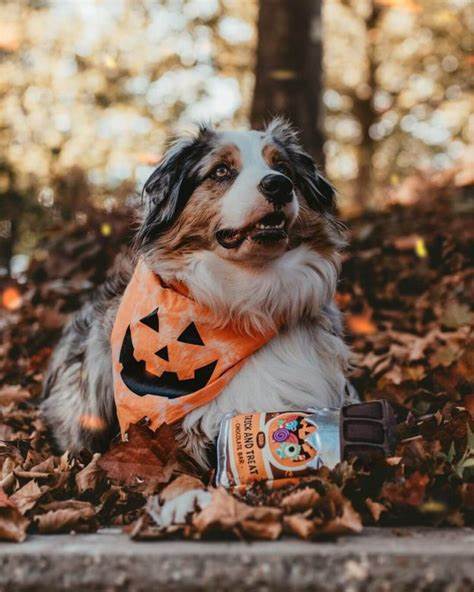
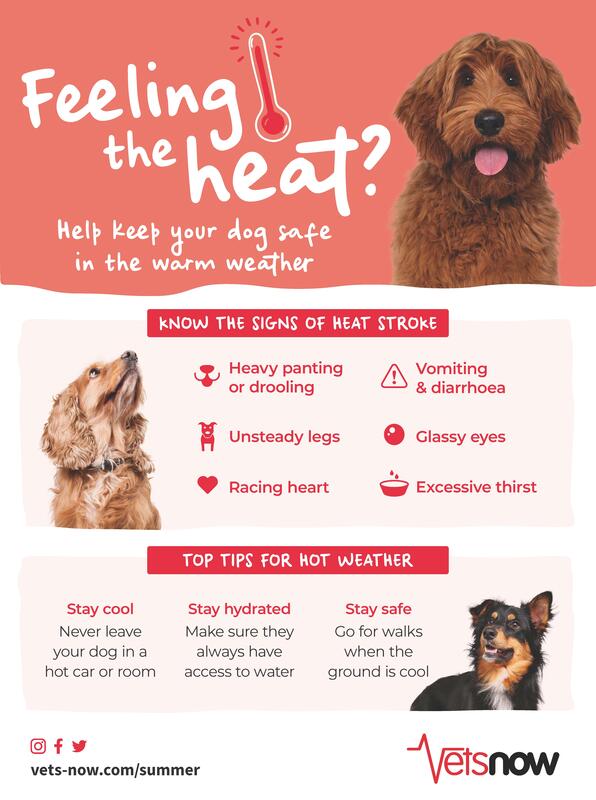
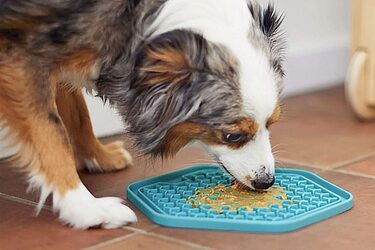



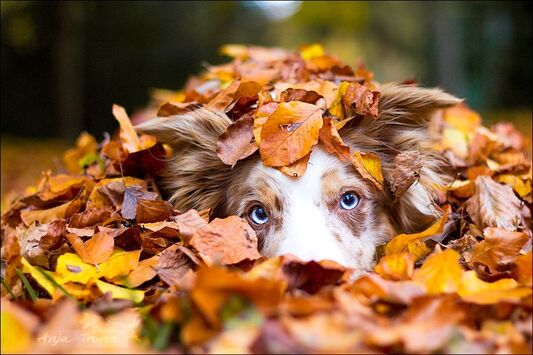



 RSS Feed
RSS Feed
